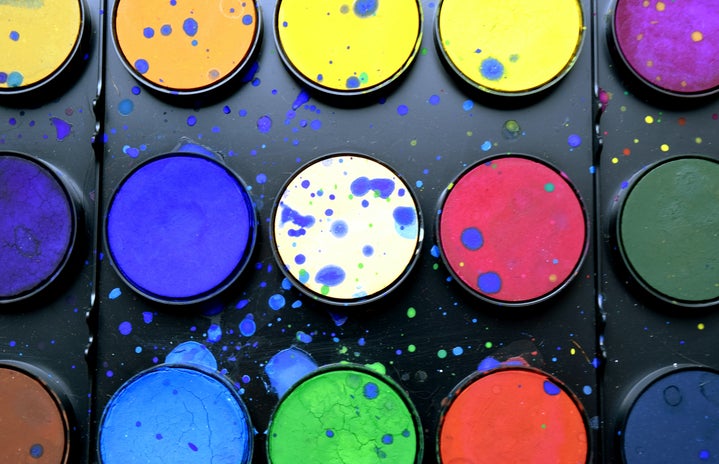In light of how in love I was with Ragnar Kjartansson’s The Visitors while it was here at Kenyon, I really wasn’t sure how I was going to feel about the Gund Gallery’s next exhibit. Like, I truly didn’t know if I could ever feel real love again. Regardless, I missed having art so accessible to me on campus during the week that the Gallery staff and Associates were working so hard to take down the first exhibition and install the second. So I showed up, of course, the moment that Transition States by Rafael Lozano-Hemmer opened at the Gallery, like any art enthusiast (and hopeful future Associate) would.
As soon as I walked into the exhibit, in the same way I felt with the last one, I knew I was about to be a part of something really special. I’d argue that with this exhibit, you’re even more a part of the art. The thing about it is because it’s so interactive, viewers have to participate for it to work at all. The pieces feature motion sensors, recording devices, buttons to press, scanners to place your phones and wallets under, and projections to interrupt with your shadows. The art happens because we as viewers allow it to happen. The very air in the gallery is entirely different—every single cubic centimeter of space right now is part of the exhibit. Before it opened, the artist went into the vent system of the building and poured into the vents particles of elemental gold, the purest kind there is. They float around in the air throughout the entire gallery, unseen by the naked eye but there nonetheless. As we walk around, we breathe the gold in and out. I don’t know about you, but getting to say that I’ve breathed pure gold wasn’t something I could have done before exploring this exhibit. It made all the difference for me just to know that, even though I’d never have been able to notice it on my own. Sometimes, it feels like the exhibit knows you’re watching it. It’s always changing, so every individual moment in the gallery belongs only to the people seeing the exhibit in that moment. You almost have to spend every free minute you can in there, and still, you’ll never get even a fraction of what the exhibit can be all at once. You’re guaranteed to have something new to think about every time, whether it’s a question projected on the wall, a mismatched combination generated by pressing a button, or an unexpected response from the microphone once you speak into it. What else is really amazing about the exhibit is how it reminds you of your relationship with everything in the entire world. There are installations, like the clock and the projected articles, that remind you how much is constantly going on outside the Gund Gallery, and how the world never stops turning and you are constantly a part of that. There are installations, like the conveyor belt and the microphone, that remind you that the past is still present, and that your story is interwoven with so many other stories and most of them you’ll never even hear about, but somehow in some way your presence on a tiny college campus in Ohio will reach somebody at the next location, and you can contribute your voice and it won’t go unnoticed, and you have the power to make that presence count. (I believe the word for that is something like “sonder.”) And I’m gonna be honest. There are installations like the lock directly across the room from the entrance. And I don’t know what the lock installation means. And I don’t know much about the six blocks of colors on the walls. But someone gets it. And that’s pretty cool.
For me, at least, the exhibit had me thinking a lot about my role as a human being and my ability to make changes in the lives of others, and my responsibility to make those changes as positive as I can. It mostly makes me think about the idea that people are on earth to form community, and to support each other in every way they can, and that we need to each of us remember that we’re a part of a world that is so much bigger than ourselves and so much bigger than any of us could ever really understand.
The gold in the air isn’t exclusive to the gallery. In walking in, in interacting, in turning yourself into a contribution to a piece much bigger than yourself, even if you choose not to contribute, you take a piece of the exhibit with you everywhere, in your own lungs. Remember to make the decision to breathe gold out sometimes after you’ve breathed it in. It could make all the difference in a way you’d never even be able to notice.
Image Credit: Annmarie Morrison

